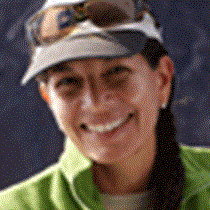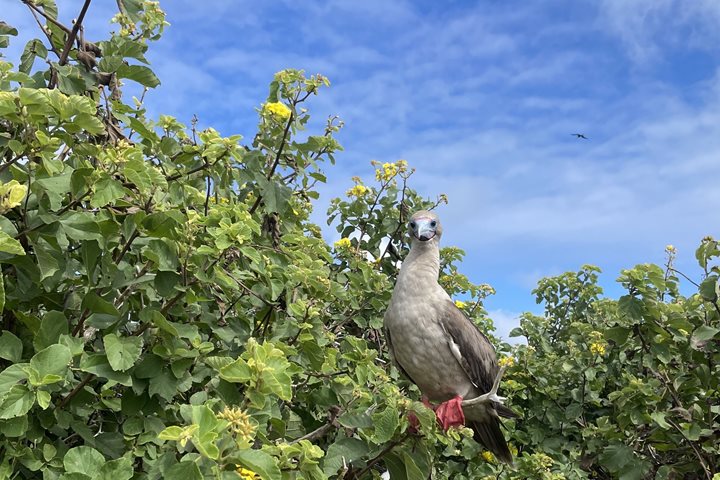Isabela, the largest island in the Galápagos group, makes up just over half the total surface area of the archipelago. It is a unique island, in that it is created by the fusion of six enormous shield volcanoes, which give rise to the characteristic “seahorse” shape of the island. Its highest volcano, Wolf (1707 mts), has been erupting since June, and you can still see the glare at night.
In 1954, 1.5 square kilometers of the marine reef off the coast of Isabela was uplifted, almost instantaneously, by as much as 15 feet (four meters)! This happened at Urbina Bay, where we landed this morning. During the uplift, the marine creatures of the area were left high and dry, and some evidence of this occurrence can still be found: barnacles, sea worms and shells attached to rocks more than half of a mile away from the shore, a huge coral head in the middle of the trail and the old beach, now surrounded by land, which was previously under the sea. We explored the site following a long and a short trail, and we found huge colorful land iguanas and a smaller giant tortoise, as well as many Darwin finches, mockingbirds, Galapagos doves and colorful vegetation.
The day was hot, and after the hikes, everyone enjoyed a refreshing swim from the beach.
Once the land and water activities ended, we returned to the ship to hear from Vanessa, one of our naturalists, about Charles Darwin and his trip here in Galapagos, his thoughts and observations, and the way that he built his theories of evolution through natural selection, which changed the entire understanding of life on earth.
After an incredible mixture of flavors during our traditional Ecuadorian lunch, we dropped anchor in Tagus Cove, at the base of Darwin Volcano, where we spent the afternoon exploring the site by kayak and the deep waters by snorkeling along the cliffs. Later on, we had the opportunity to explore by Zodiac, and we also offered a hike to the rim of a small crater with fantastic views of the northern volcanoes of Isabela.
During the outings, our guests were able to learn about the important and successful program in the ecological restoration of the islands: the eradication of feral goats and donkeys. Never before has a program of such magnitude been attempted on an island of this size. The Isabela Project, one of the programs supported by Lindblad Expeditions-National Geographic guest donations, was successful beyond expectations, and now the native inhabitants that once faced extinction are well on the road to recovery.









